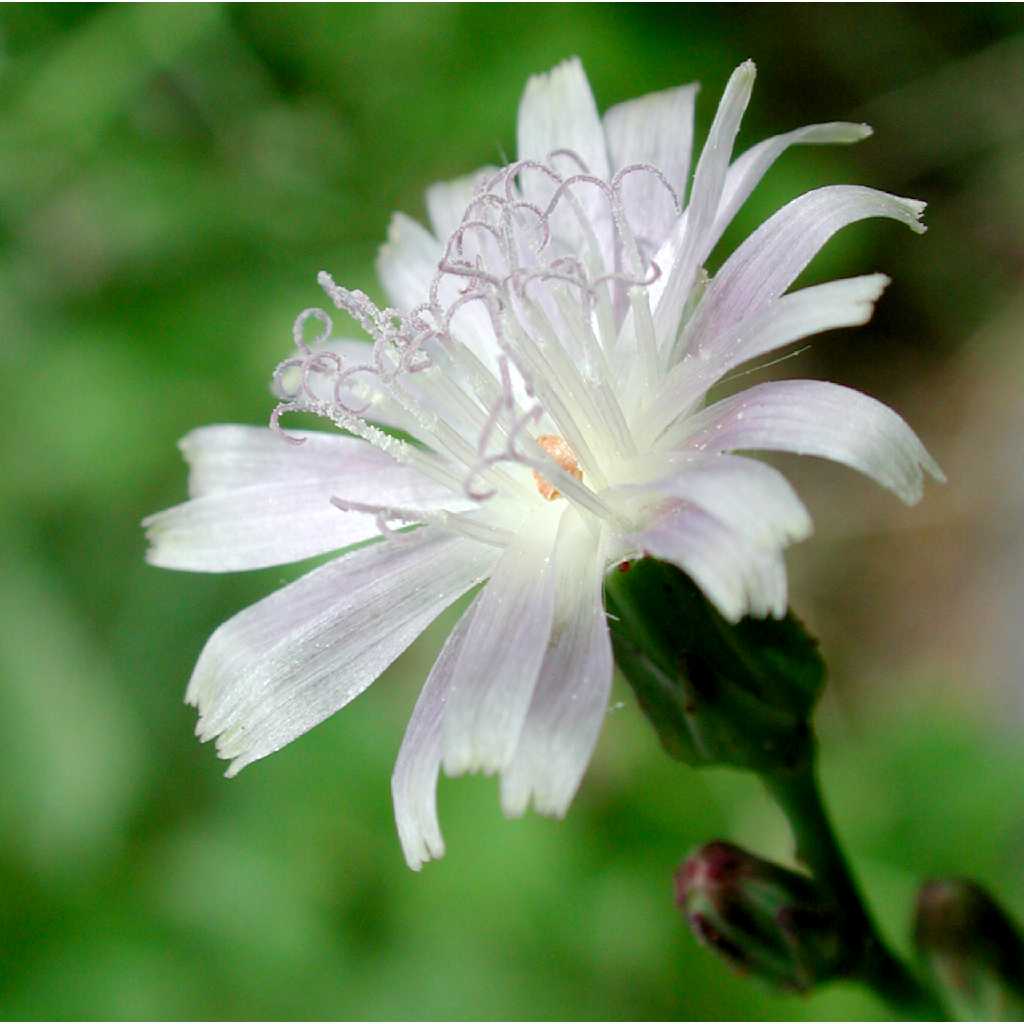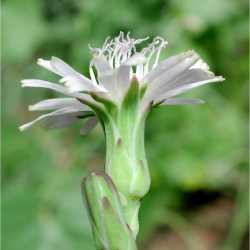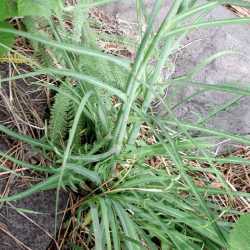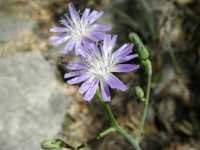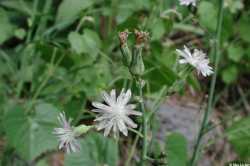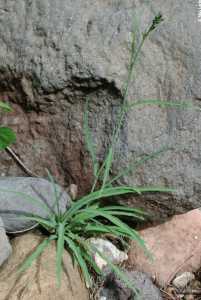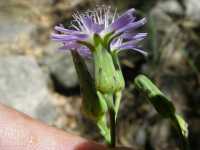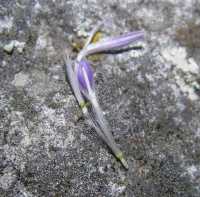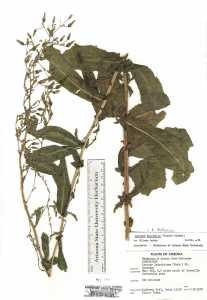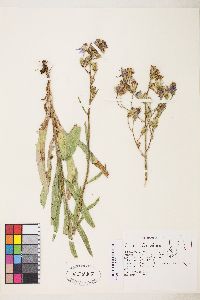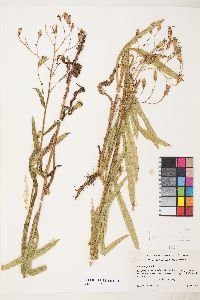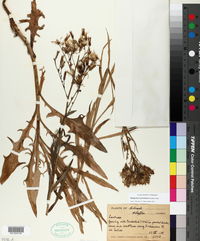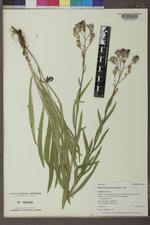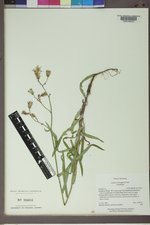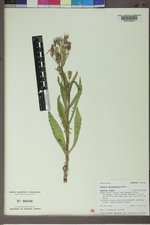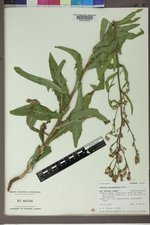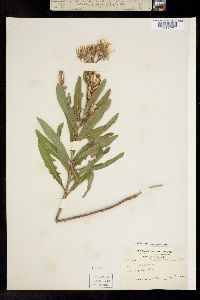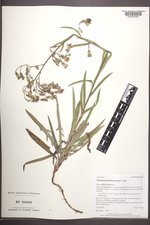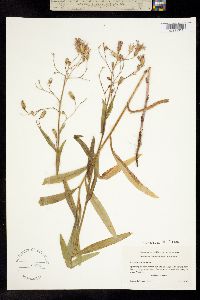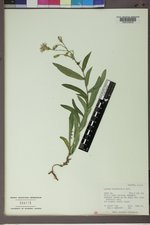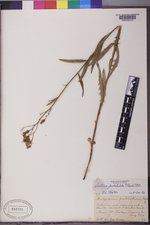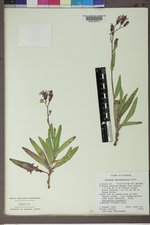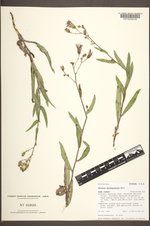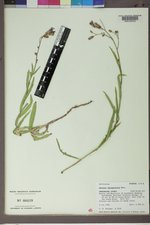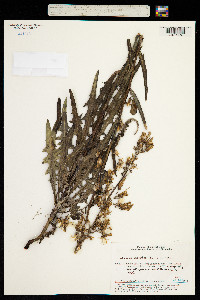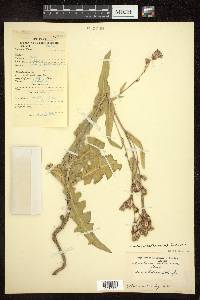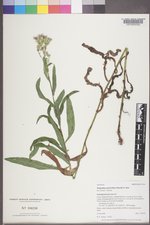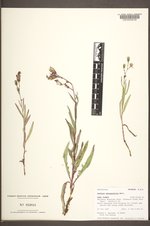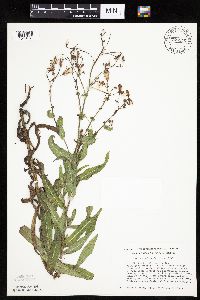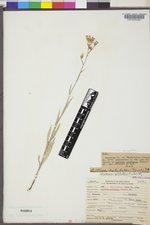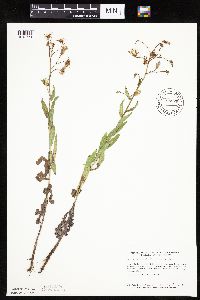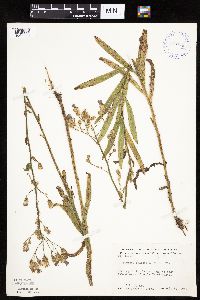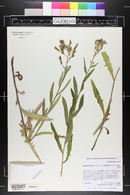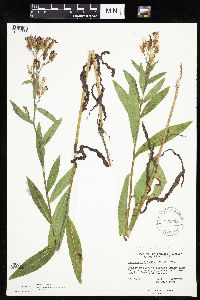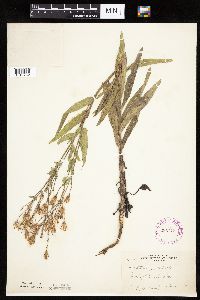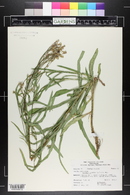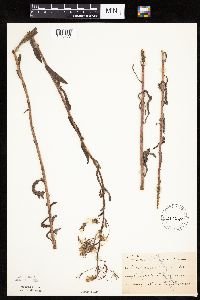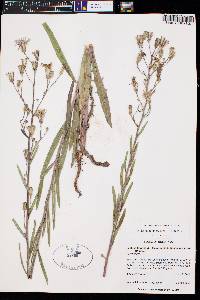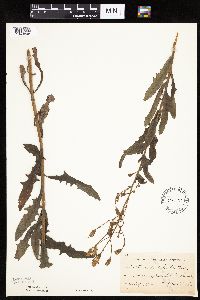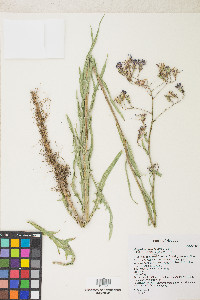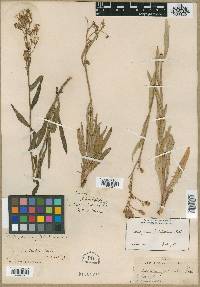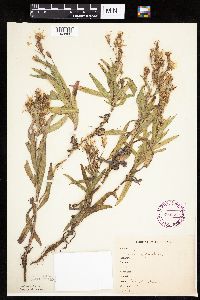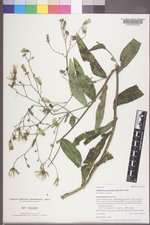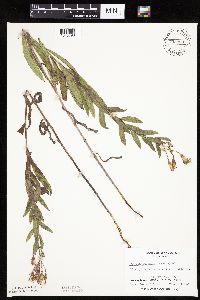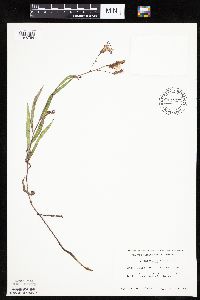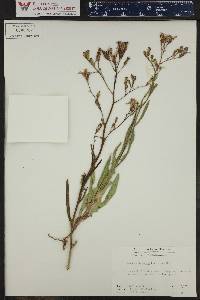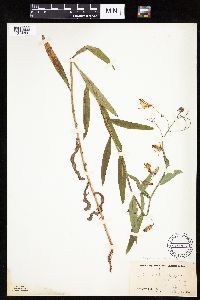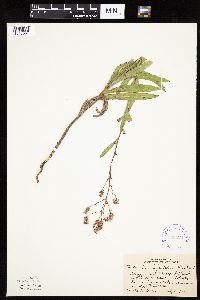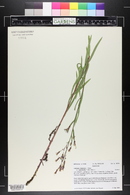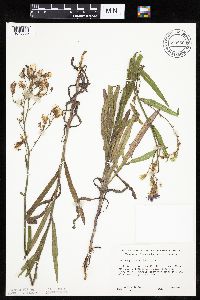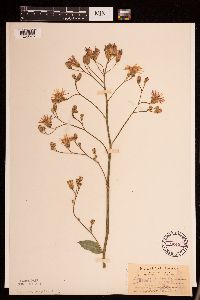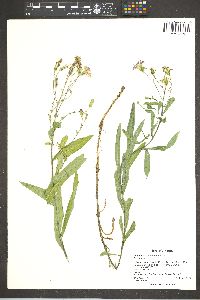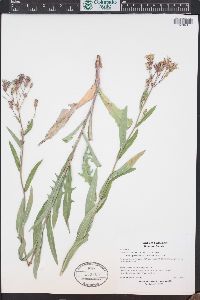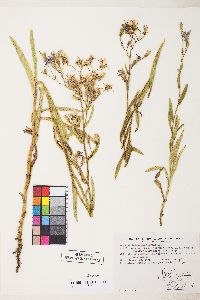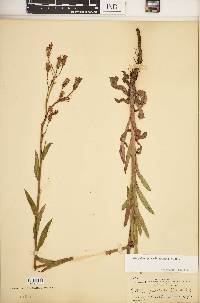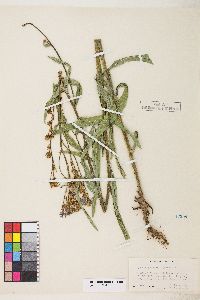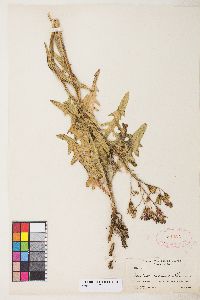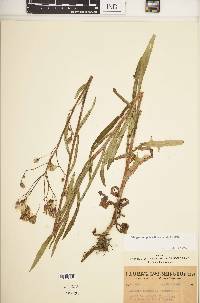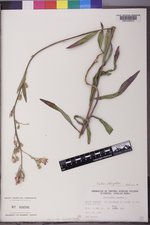Mulgedium pulchellum
|
|
|
|
Family: Asteraceae
blue lettuce, more...blue lettuce, Russian Blue Lettuce, Russian blue lettuce, blue lettuce
[Lactuca tatarica (L.) C.A. Mey., moreLactuca tatarica var. pulchella (Pursh) Breitung] |
Leaf blades 3-12(-18) cm × 5-25(-35+) mm. Involucres 12-15+ mm. Cypselae: bodies 4-5+ mm, beaks 0-1 mm; pappi 7-9(-12+) mm. 2n = 18. Flowering Jun-Sep. Calcareous sites, clearings in forests or shrublands, meadows, roadsides, stream banks, other wet sites; 800-3200 m; Alta., B.C., Man., N.W.T., Ont., Que., Sask.; Alaska, Ariz., Calif., Colo., Idaho, Ill., Ind., Iowa, Kans., La., Maine, Mich., Minn., Mo., Mont., Nebr., Nev., N.Mex., N.Y., N.Dak., Ohio, Okla., Oreg., Pa., S.Dak., Tex., Utah, Wash., Wis., Wyo. The type of Mulgedium pulchellum may be conspecific with that of M. tataricum (Linnaeus) de Candolle, a Eurasian species. Or, if 'perennial' plus 'Fl. blue' constitutes sufficient description for valid publication of the name Lactuca oblongifolia Nuttall (1813), then a new combination in Mulgedium based on that name may be appropriate for what is here called M. pulchellum. Presence of Mulgedium pulchellum in Texas is based on a single, early collection.
FNA 2006, Kearney and Peebles 1969, McDougall 1973 Duration: Perennial Nativity: Native Lifeform: Forb/Herb General: Herbaceous biennials to perennials, to 100 cm tall, glabrous, stems leafy, with milky sap, plants with spreading rhizomes. Leaves: Alternate, linear-lanceolate to oblong, 5-15 cm long, margins entire to dentate or pinnatifid, not spinulose, faces glabrous. Flowers: Heads small to medium, blue to purple, radiate, rays , 1-, disk flowers , receptacle , involucres 14-20 mm high, cylindrical, phyllaries overlapping in 3-4 series, inflorescences borne Fruits: Achenes strongly flattened, to 4 mm long, with several ribs on each face, contracted into a beak with a disk at the apex, the beak about half as long as the body. Pappus of white, copious, early deciduous capillary bristles. Ecology: Found from 6,000-7,500 ft (1829-2286 m); flowering summer. Distribution: Saskatchewan to British Columbia, south to Missouri, New Mexico, Arizona, and California. Notes: Look to the blue flowers, the phyllaries in 3-4 series, and the ribed achenes to help identify this species. Needs editing, further research....I cannot find a definitive source for L. tatrica, only L. tatrica var. pulchella, although they do not seem to be conisdered the same species-checked Jepson, FNA, older texts have L. tatrica var. pulchella only-.information listed for this species so far is from L. tatrica var. pulchella..... Ethnobotany: Unknown Etymology: Lactuca is Latin for milky sap, while tatarica is a reference to Tatars, the Turkic peoples living in the old USSR. Synonyms: Mulgedium tataricum- Editor: LCrumbacher 2011 FNA 2006, Kearney and Peebles 1969, McDougall 1973 Duration: Perennial Nativity: Native Lifeform: Forb/Herb General: Herbaceous biennials to perennials, to 100 cm tall, glabrous, stems leafy, with milky sap, plants with spreading rhizomes. Leaves: Alternate, linear-lanceolate to oblong, 5-15 cm long, margins entire to dentate or pinnatifid, not spinulose, faces glabrous. Flowers: Heads small to medium, radiate, rays blue to purple, disk flowers blue, with extruded blue stamens and anthers, involucres 14-20 mm high, cylindrical, phyllaries overlapping in 3-4 series. Fruits: Achenes strongly flattened, to 4 mm long, with several ribs on each face, contracted into a beak with a disk at the apex, the beak about half as long as the body. Pappus of white, copious, early deciduous capillary bristles. Ecology: Found from 6,000-7,500 ft (1829-2286 m); flowering summer. Distribution: Saskatchewan to British Columbia, south to Missouri, New Mexico, Arizona, and California. Notes: Look to the blue flowers, the phyllaries in 3-4 series, and the ribed achenes with sort beaks to help identify this species. Look for this species under L. pulchella in older texts. Ethnobotany: An infusion of the plant was used to treat diarrhea, a polutice of the roots was applied to piles, and the roots were used as chewing gum. Etymology: Lactuca is Latin for milky sap, while tatarica is a reference to Tatars, the Turkic peoples living in the old USSR, while pulchella is derived from the Latin for beautiful. Synonyms: None Editor: LCrumbacher 2011 Duration: Perennial Nativity: Native Lifeform: Forb/Herb General: Perennial, 20-120 cm tall; stems usually 1, usually erect, branched above, glabrous or nearly so; plants with milky sap; more-or-less rhizomatous. Leaves: Mostly cauline, numerous, alternate, oblong, linear, or lanceolate, 3-18 cm long, 0.5-3.5 cm wide; surfaces glabrous, often blue-glaucous beneath, margins entire or the lower ones pinnately lobed (the segments often pointed towards base of blade), seldom sharply toothed; lower cauline blades short-petiolate, upper cauline blades sessile. Flowers: Heads in dense terminal clusters; involucre narrowly ovoid, 6-9 mm long, 2-5 mm wide, phyllaries strongly ridged, each enclosing a marginal achene, glandular- pubescent; ray flowers inconspicuous, mostly 1-3, occasionally 0, 1-3 mm long, yellow to greenish yellow or purple tinged; disk flowers 1-5, 3-4.5 mm long, yellow; flowers July-September. Fruits: Achene, oblong-lanceolate, 4-7 mm long, moderately flattened, narrowing to a short, stout beak, reddish brown, mottled brown, to slate colored, conspicuously veined on each side; pappus in 2-3 series of numerous whitish, minutely barbed bristles. Ecology: Meadows, thickets, streambanks, roadsides, various wet habitats; 1200-3200 m (4000-10500 ft); Apache, Coconino, Greenlee, and Navajo counties; Canada, northeastern to western U.S. Notes: The dried root is chewed as gum. Editor: Springer et al. 2008 |
|
|
|

